Windows Into Our Past

The Village of Elkhart is committed to the future and inspired by the past. Settled in 1855, Elkhart is famous for its unusual landscape – a tree covered hill that rises 777 feet above sea level, surrounded by a horizon of flat Illinois prairie land. Our window art project continues our village mission by promoting education, the arts, history, and family/community values using visual representations and incorporating descriptive panels below each window, supplemented by educational information (accessible online and printed). We look to the future by remembering our history today.
This project is designed to engage people in learning about and appreciating the Village of Elkhart’s rich history through conversation and the artistic interpretation of five window display panels at our Village Hall, each with descriptive panels below each window, supplemented by educational information (accessible online and printed). These interactive components create the opportunity for villagers, educators and visitors to gain a deeper understanding of the connections between the people, contributions and historic incidents that influenced the identity of our Illinois village and begin conversations about our current and future history-in-the-making.

Before
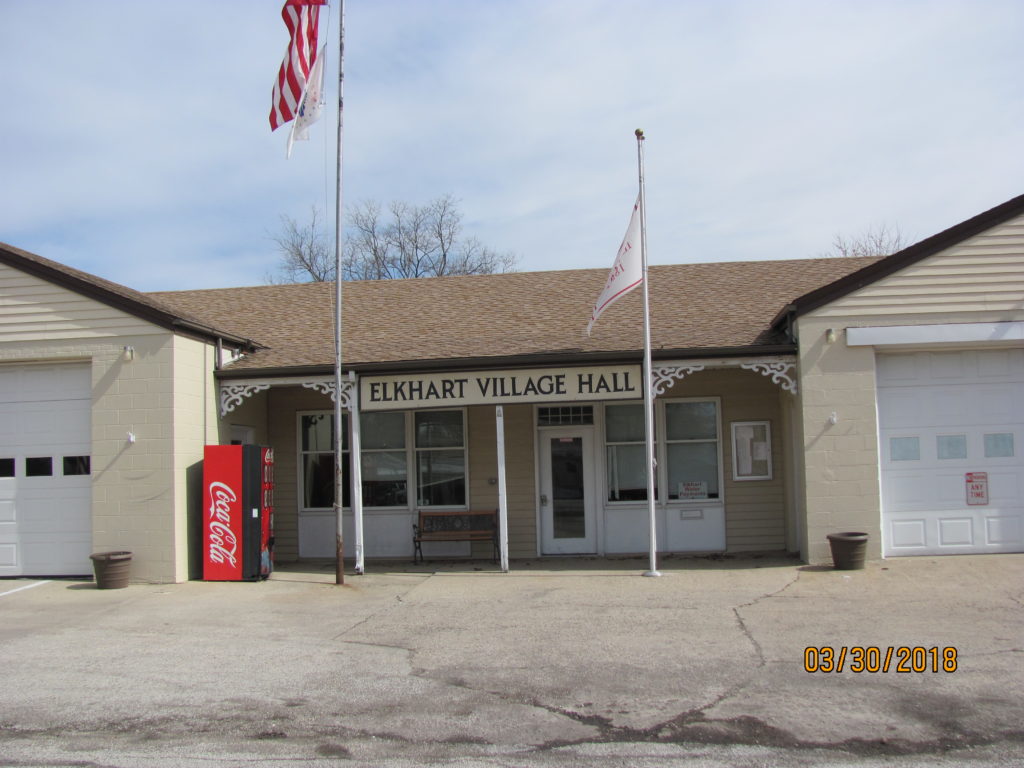
After
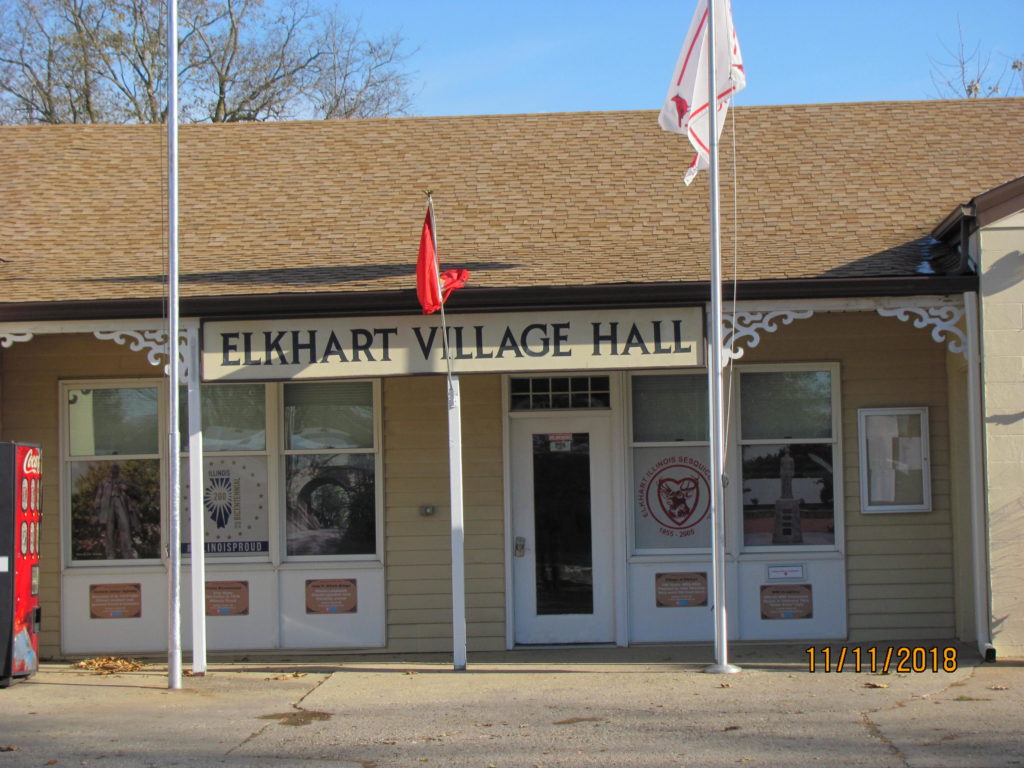
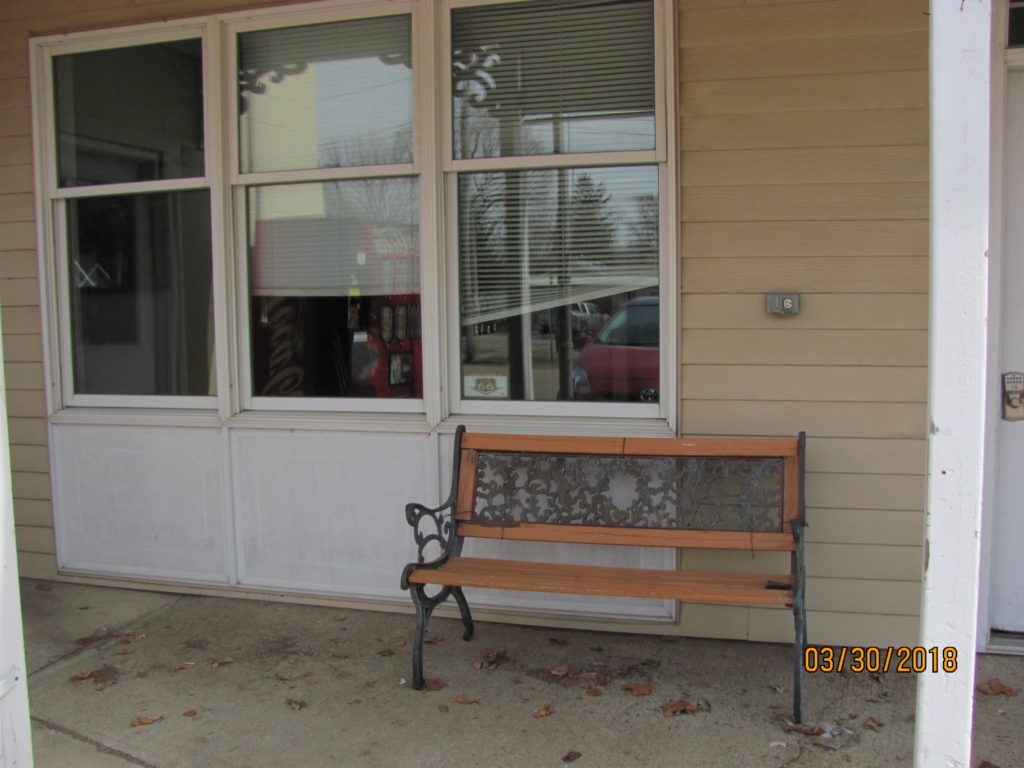

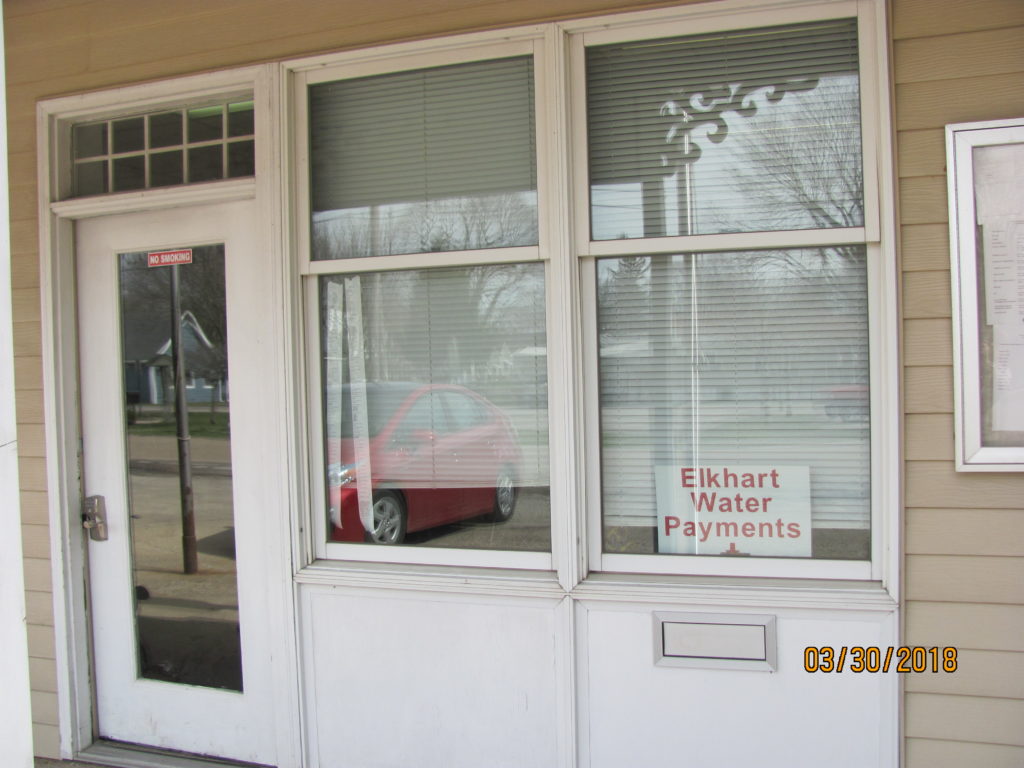
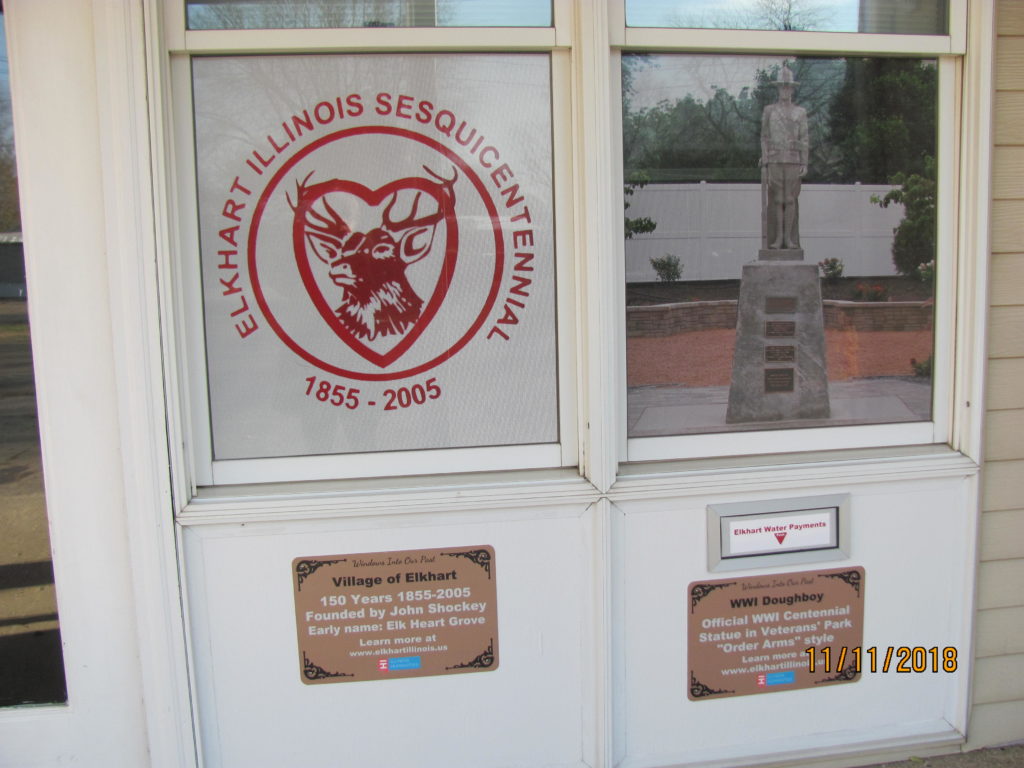

Windows
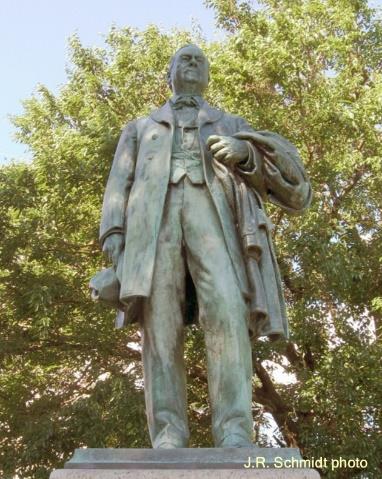
Governor Richard James Oglesby was a General in the Union Army during the Civil War, a three-term Governor of Illinois (1872-1884) and an intimate personal friend of Abraham Lincoln. Born in 1824 in Kentucky, he was orphaned at an early age and raised by an uncle in Decatur, Illinois. Governor Oglesby lived in Elkhart in his home called “Oglehurst” from the early 1890s until his death in 1899. He is buried in the Elkhart Cemetery.
Photo credit: J. R. Schmidt

Illinois Bicentennial – 200 years ago, on December 3, 1818, Illinois became the 21st state in the Union. Illinois is where the nation’s greatest rivers meet. It’s where the largest Native American city once thrived. Where the most trains cross and daily flights soar. Where the first transistor gave rise to the computer age. Where the theory of superconductivity was born. Where the biggest fair in the nation’s history was held. Where more than a quarter million men volunteered to fight to end slavery and save the Union. Elkhart is #IllinoisProud.
Text from Official Website of the Governor’s Office of Illinois Bicentennial

The John P. Gillett Memorial Bridge, built in 1915, is considered an Illinois Landmark. The arched bridge is one of only two privately owned bridges in the state of Illinois. Originally a wooden bridge built in 1899, it was part of the Oglesby estate. The funeral processional for Governor Oglesby, which included Lincoln’s son Robert, walked across the original bridge to Elkhart Cemetery. The bridge was replaced in 1915 with the current concrete, closed-spandrel arch bridge.
Photo credit: David Doolin, explorelogancounty.com

For many years, several Indian tribes populated the area around Elkhart Hill. “Edward’s Trace” (or “Old Indian Trail”) was an ancient route used for thousands of years by the Indians over the hill. As early as 1711, French priests and trappers traveled along its path and it was a major route taken by pioneers in the early 1800s. When James Latham, the first white settler, arrived in 1819, the area was known as Elk Heart Grove. Elkhart City was founded by John Shockey in 1855. In 1979, the name changed to Village of Elkhart. The Village celebrated their 150th year in 2005.
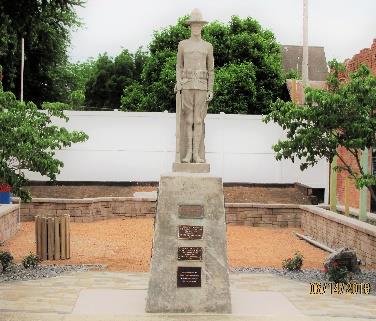
Located in Historic Downtown Elkhart in Veterans’ Park, Elkhart’s WWI Doughboy statue was presented to the Village of Elkhart by the returning veterans of World War I in honor of the soldiers who did not return from the Great War. The statue is listed in the Illinois statewide survey of monuments and honored with the official national designation as a “WW1 Centennial Memorial.” Unlike the “Spirit of the American Doughboy” figures, our statue depicts the doughboy in the position of “Order Arms” in which the rifle is held vertically next to the right leg with the butt of the rifle resting on the ground.